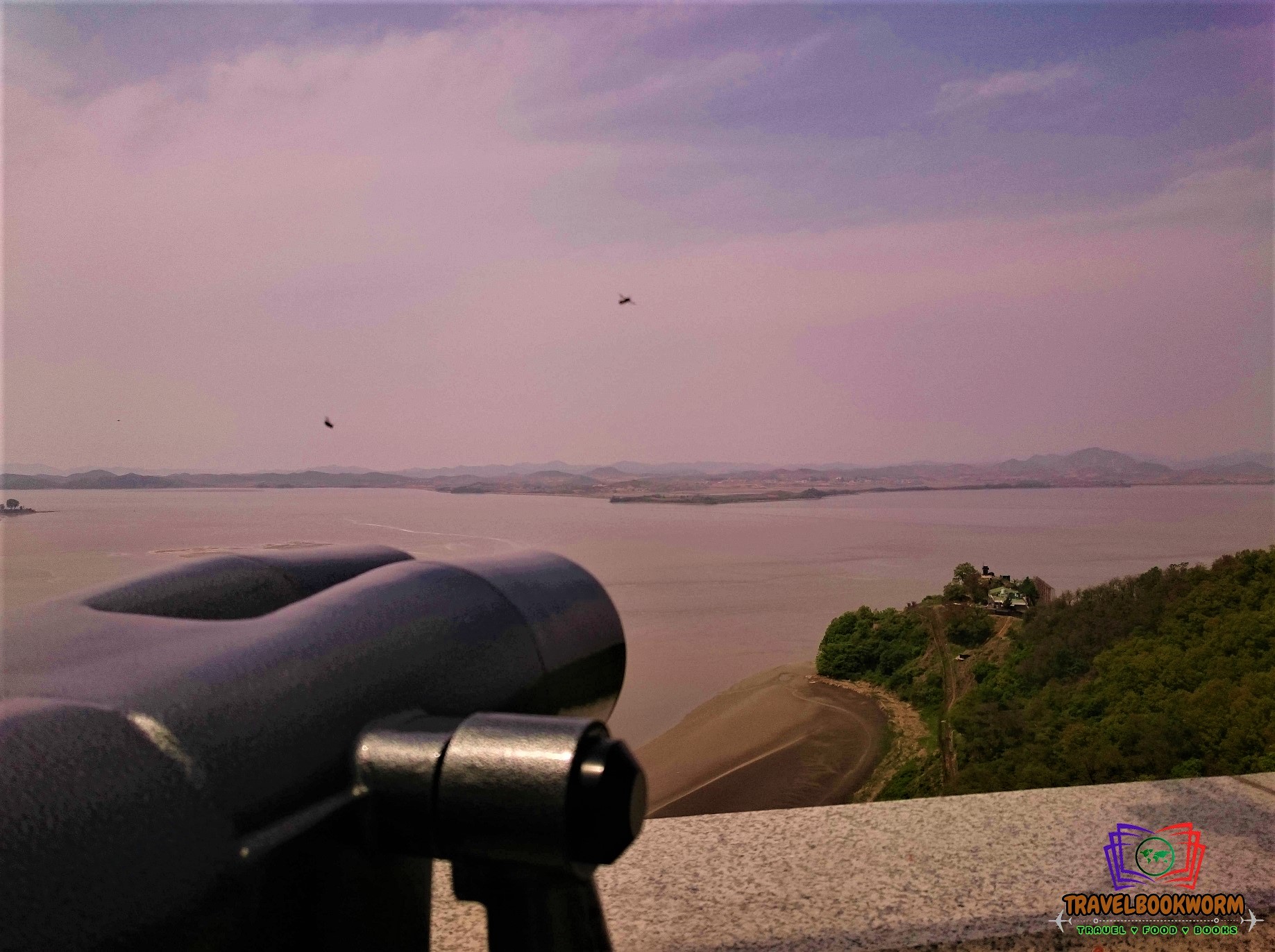I have always wanted to travel to North Korea, but it wasn’t accessible from South Korea. The only way to get there was via China or Russia in a tour group, as it was not allowed to travel independently in North Korea.
I wasn’t sure if I would be able to go there anytime in the future, So, I settled for just getting a glimpse of the country.
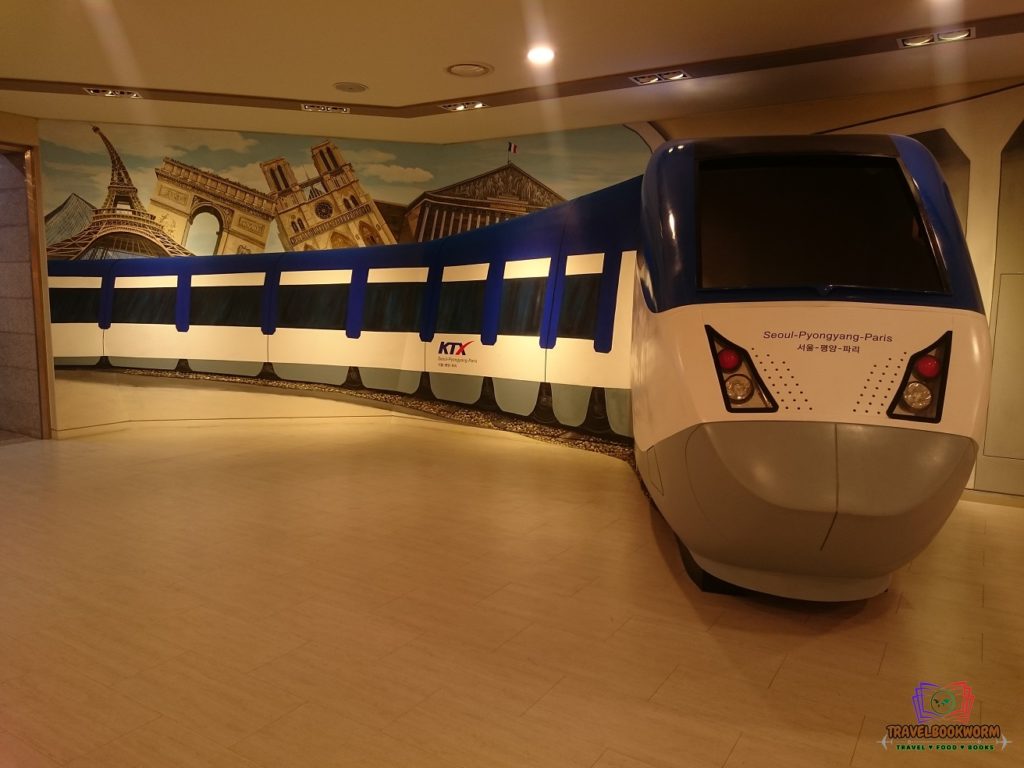
We went to the easy-access observatory located not far from Seoul in a city called Paju-Si. The whole journey via subway and buses only took less than 2 hours and no passport or compulsory tour was required to visit this place.
How to Get to Odusan by Public Transport
Getting there was easy peasy lemon squeezy and cheap too.
1. Take the Gyeongui-Jungang line heading towards Munsan. Your stop will be at Geumchon Station. Price: T-Money @ 1,850won (Depending on where you start your journey, this fare is from Yongsan / Hyochang)
2. Once you have reached Geumchon Station, step out from the station towards exit 1 and cross the road.
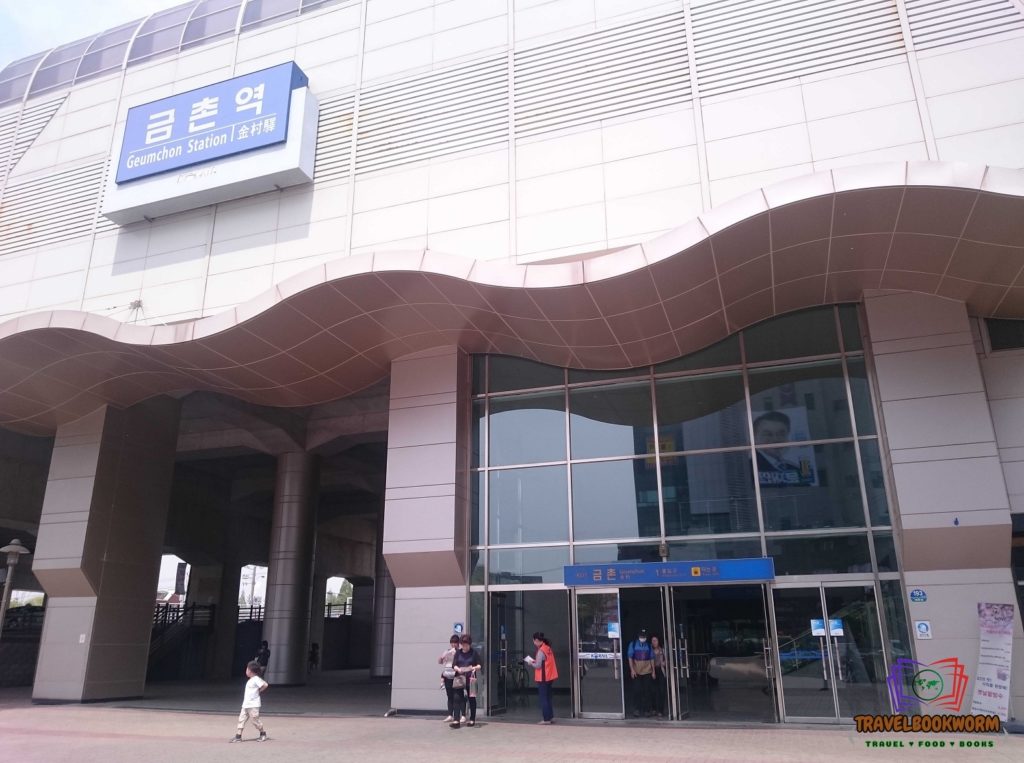
3. You will see the Geumchon bus stop on your left about 10 metres away. Take the bus no. 900 and your stop will be at the end of the journey. Price: T-Money @ 1,650won.
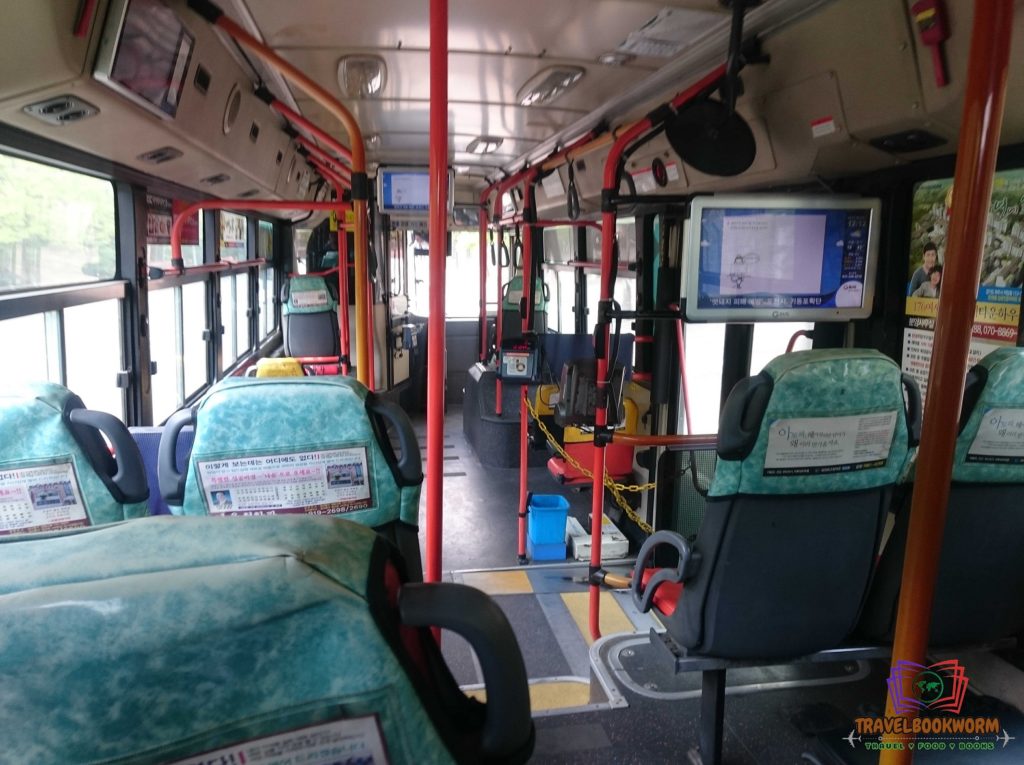
4. Cross over the road to the shuttle bus stop. You will see the blue and white bus written “Unification Observatory”. The shuttle bus leaves every 30 minutes, and it’s free of charge.
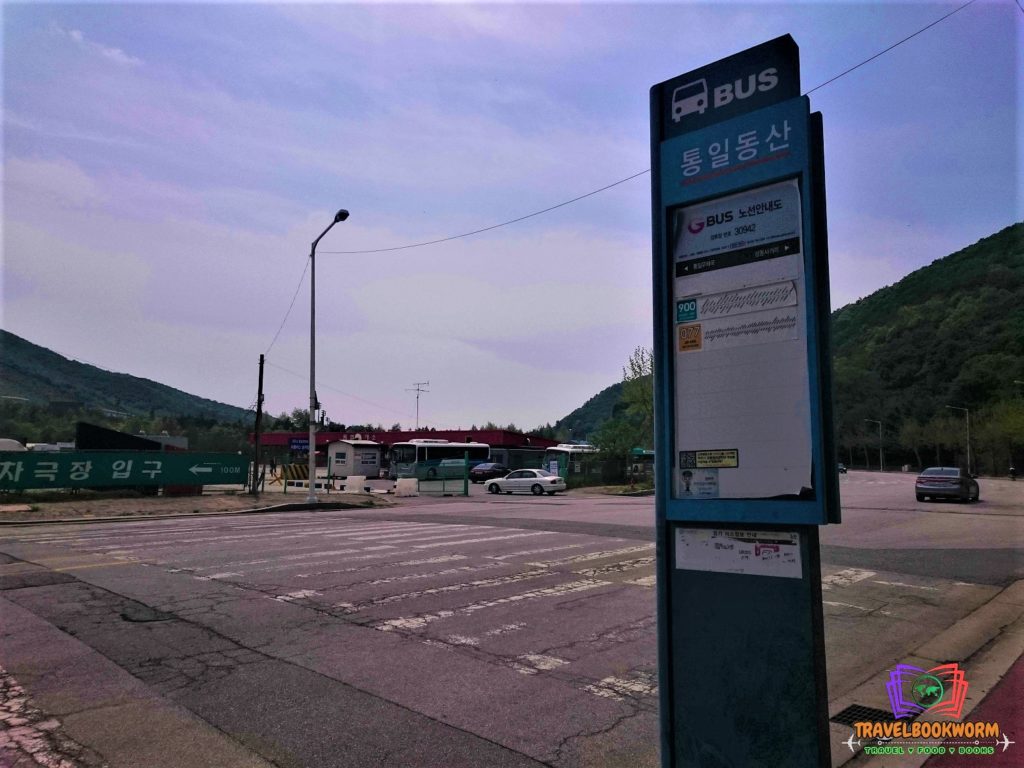
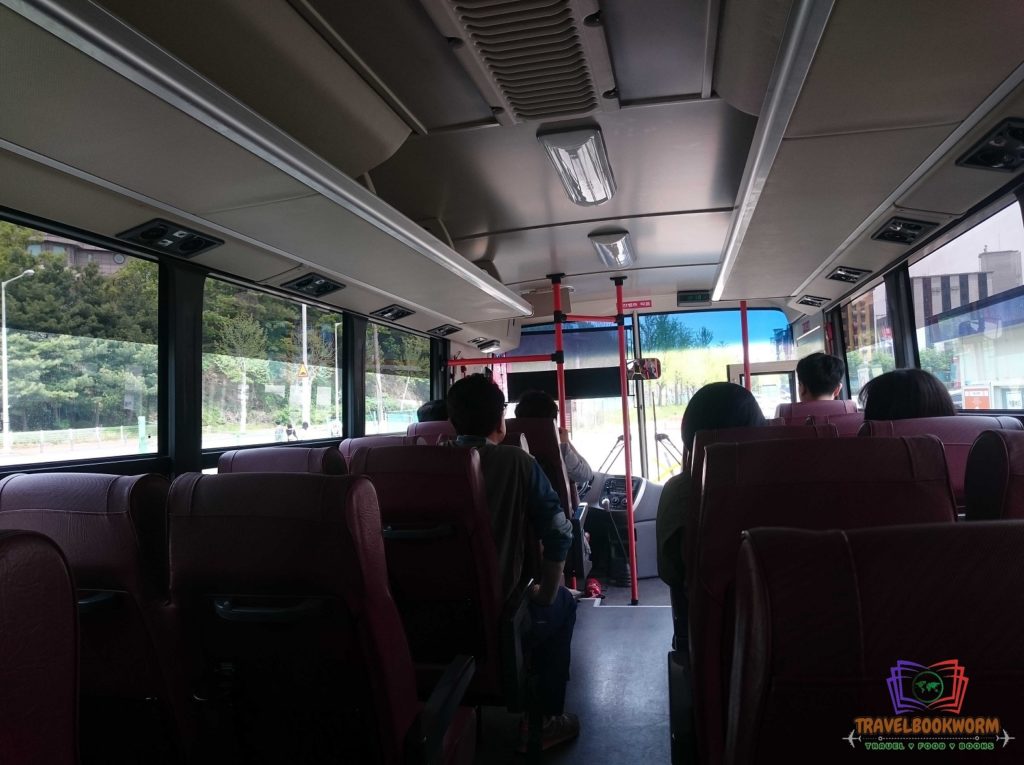
What to See and Do in Odusan Observatory
As soon as you reach the top and step out from the shuttle bus, you can hear the propaganda music played by North Korea. To get inside, you will need to purchase an entrance ticket for the cost @ 3,000won per person.
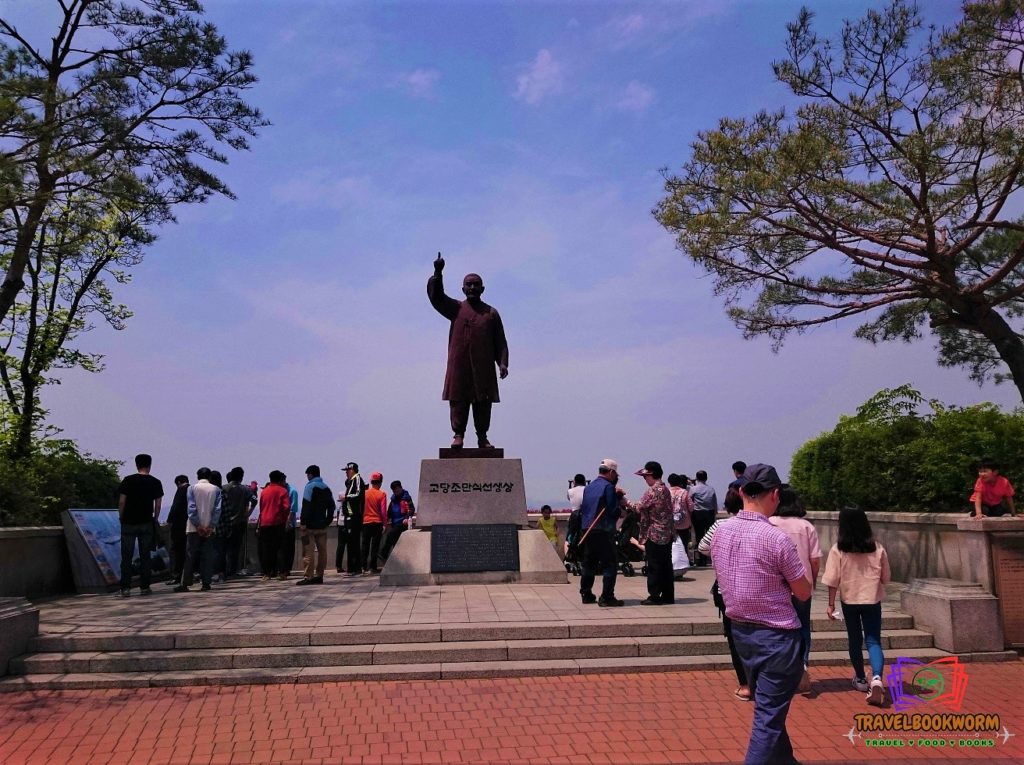
You will see there are binoculars on the ground floor. Do not race to the binoculars, get yourself comfy on the 3rd & “4th” floor. By the way, you can use those binoculars for free.
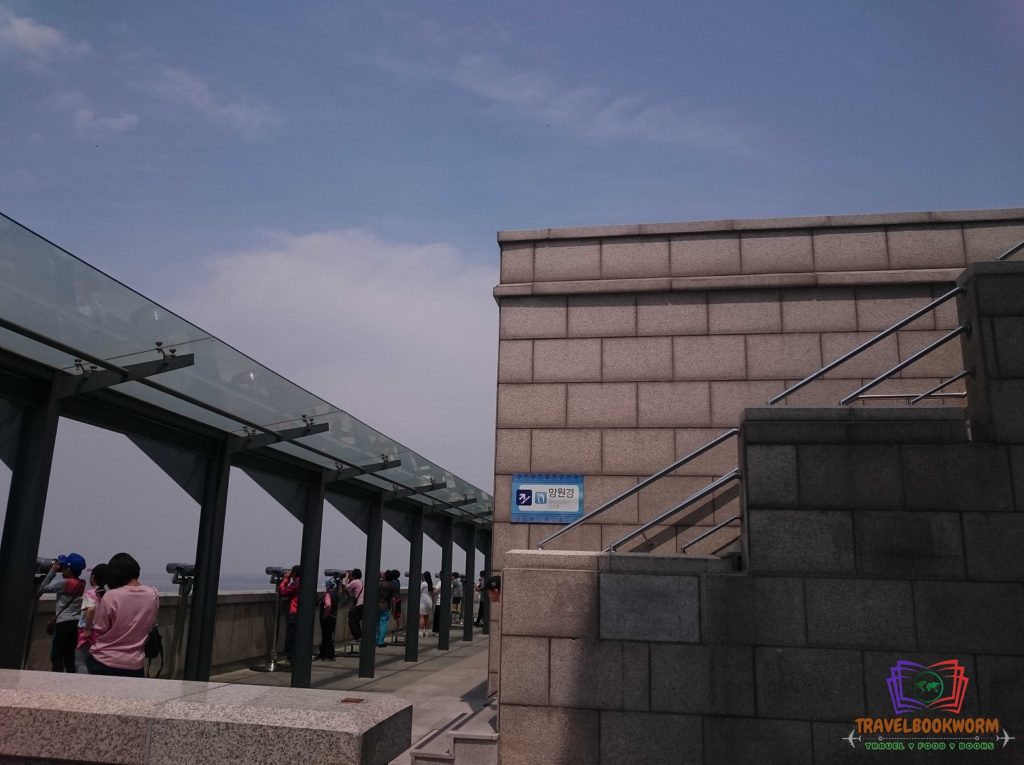
From the binoculars, I saw most of the farmers wearing black, and only 1 had a white top. There’s also someone cycling on a bicycle, and I didn’t see any vehicles. I couldn’t believe that I was so close to North Korea, only 2100 Metres away and separated just by the Han/Imjin River. Well, not as close as the one in the DMZ but still, I was thrilled to be there.
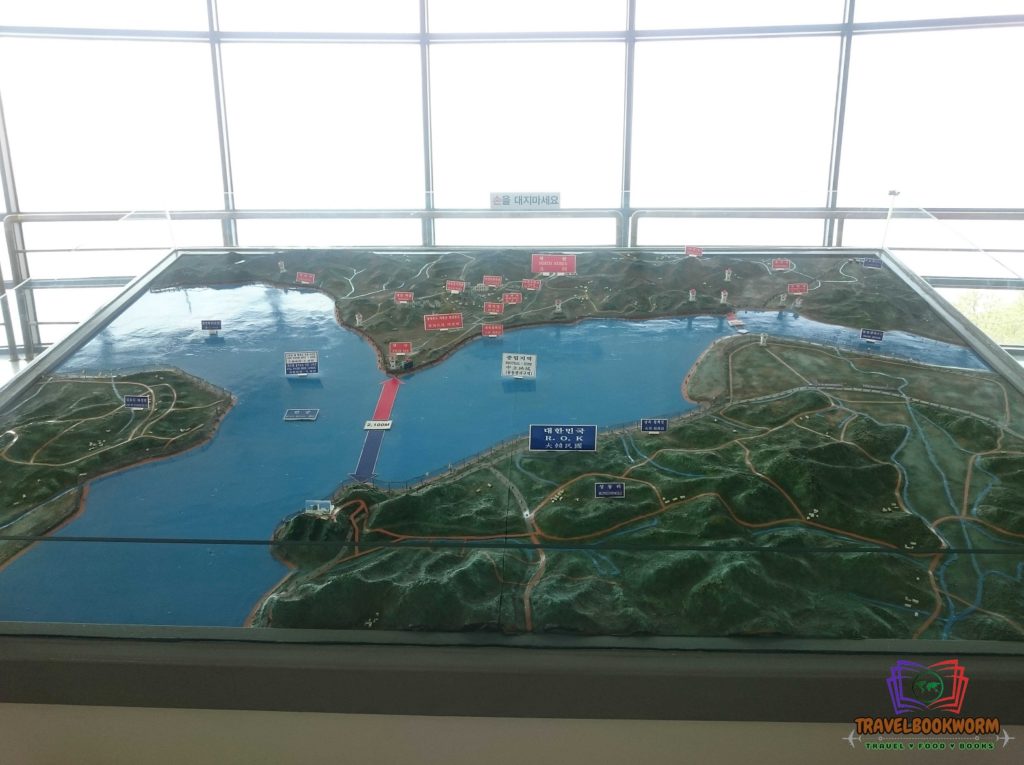
Here were some pictures captured with the binoculars (I’m not sure if it’s alright to do so)
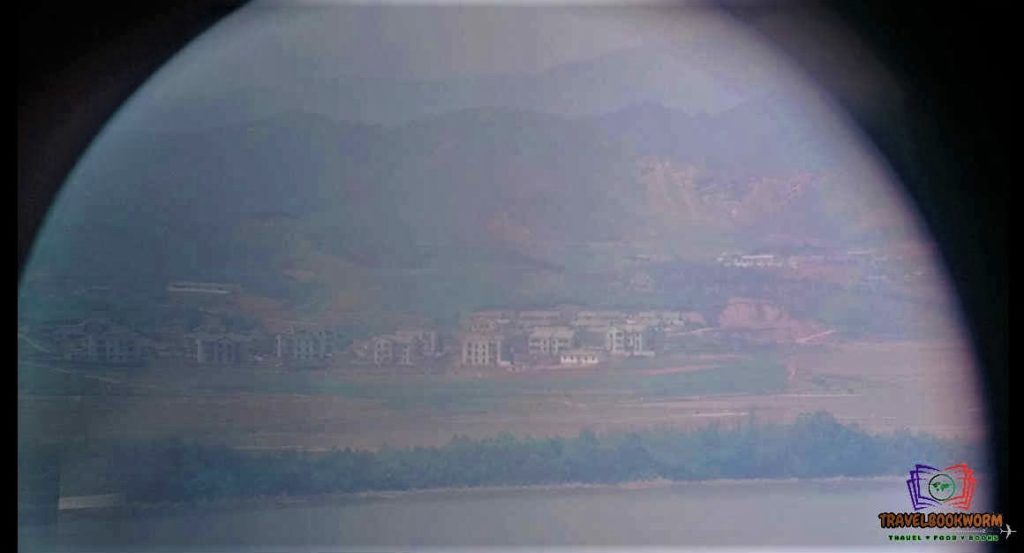
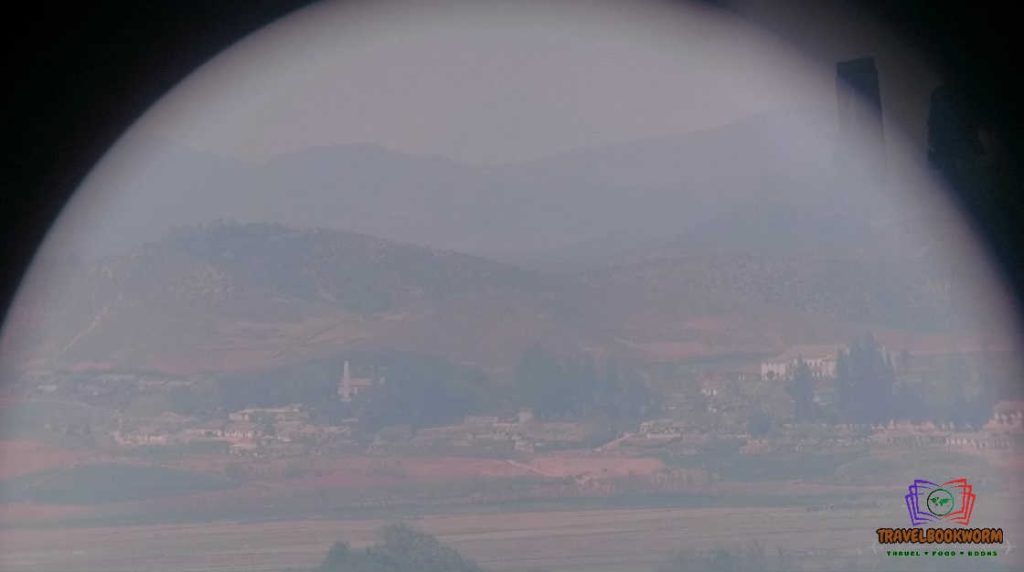
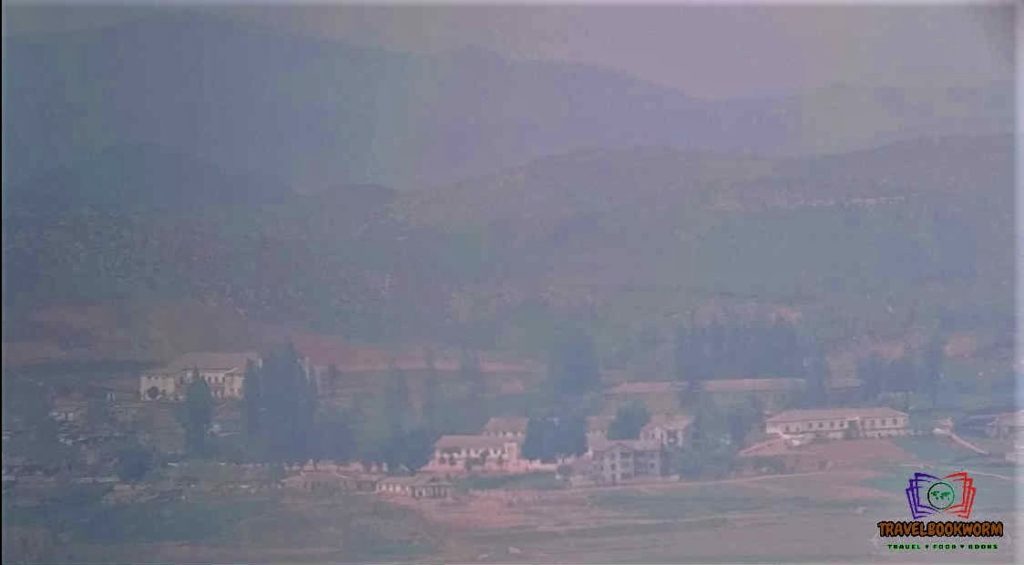
I know it’s not clear because of the haze. Yes, I blame the haze! What you can see from this picture are Kim Il-Sung Memorial Hall, A public cultural hall, Lim Han Elementary School & Duksu Reservoir (somewhere in the middle of this photo in between the hill)
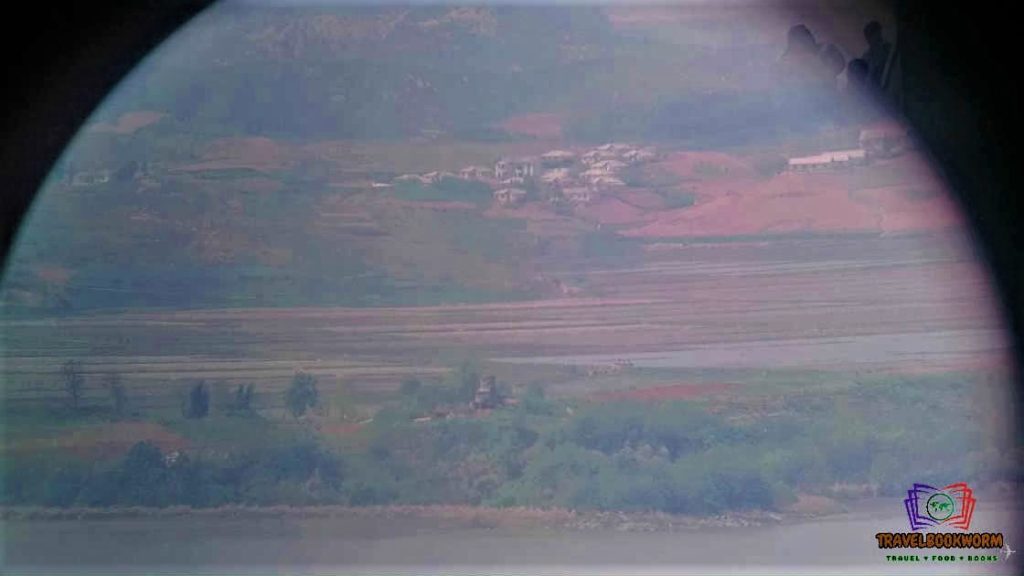
That’s the observation point, near the river. I couldn’t pinpoint the Threshing floor, Yeoni Mountain, Gunjang Mountain, and Songak Mountain.
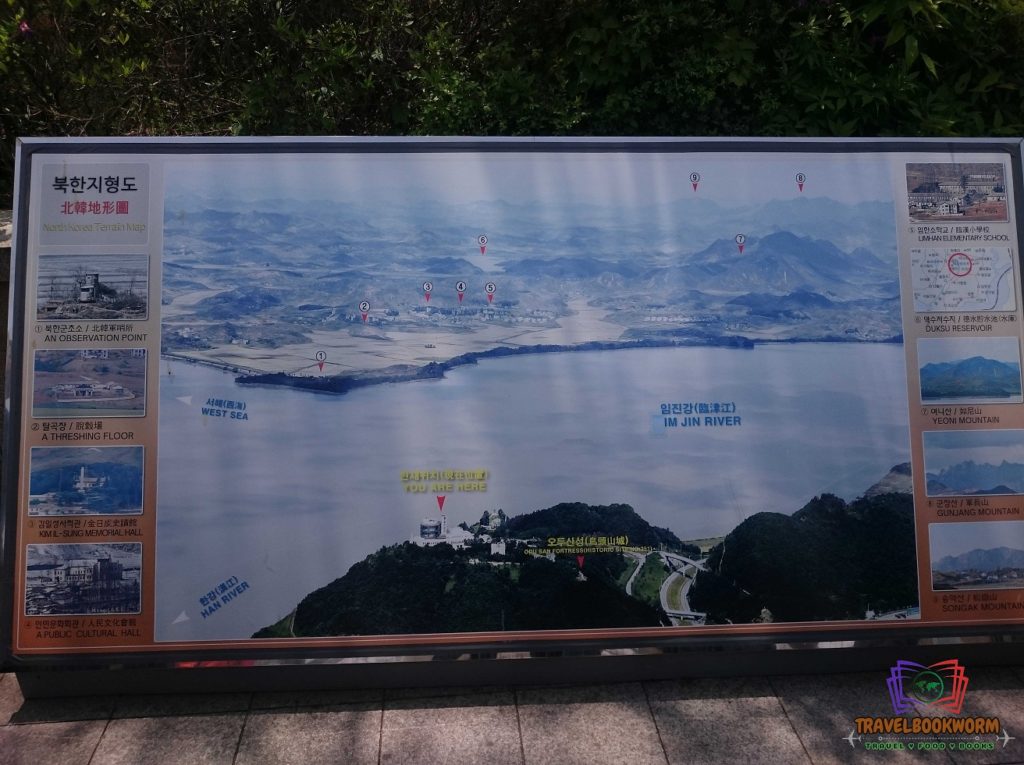
For those who want to learn the history of these two countries, head down to the 2nd floor. But before that, you can relax on the floor next to the binoculars. The seating is comfortable, and you will also be able to learn the history on the TV screen. However, on this floor, it plays in Korean languages. For English and Japanese, head to the 4th floor.
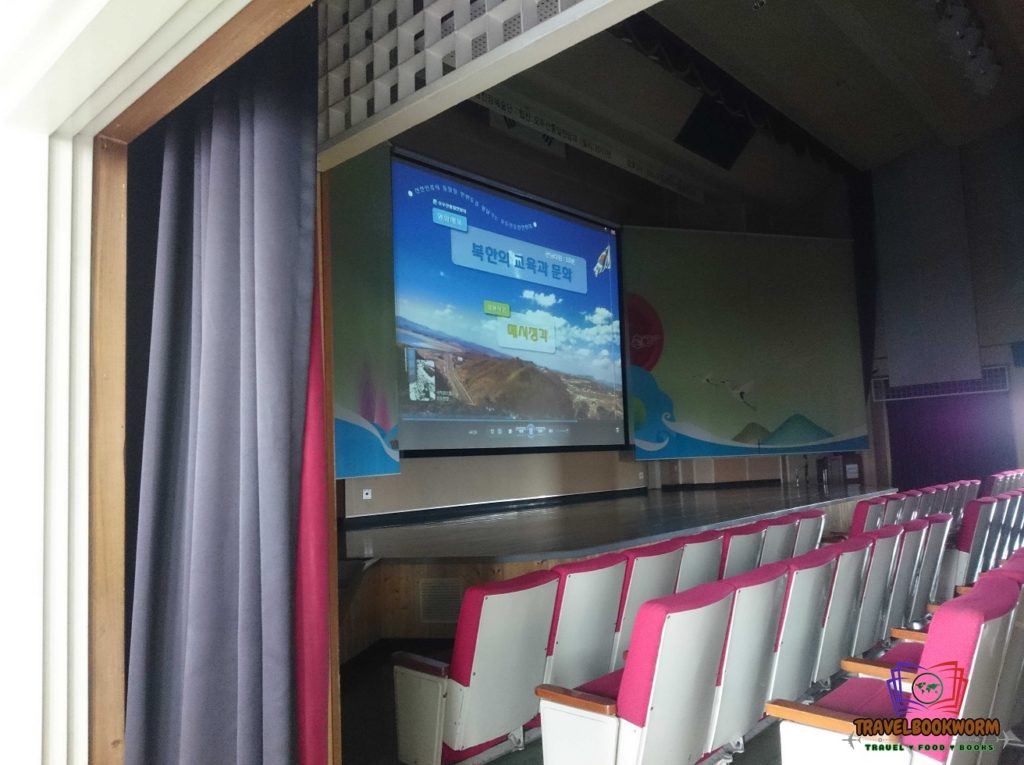
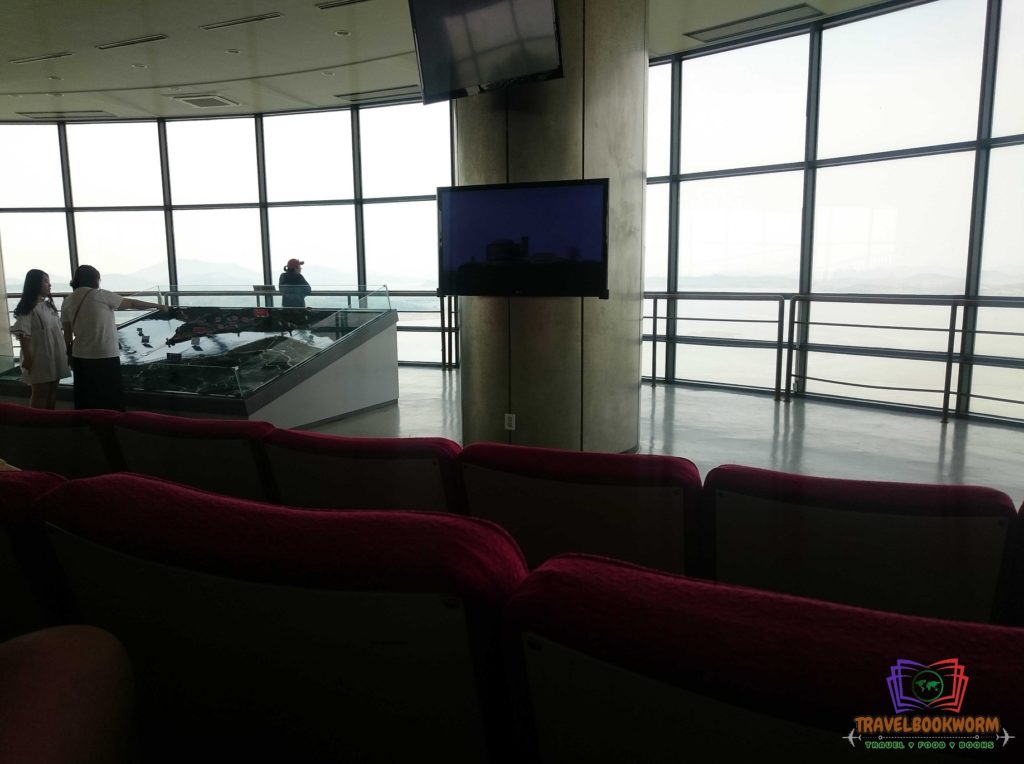
Here are the histories from 1945 – 2016:
1945 ~ 1950
15/08/1945 – National Liberation
15/08/1948 – Establishment of the Government of Republic of Korea
09/09/1948 – Establishment of the Democratic People’s Republic of Korea
25/06/1950 – Outbreak of the Korean War
27/07/1953 – Signing of the Armistice Agreement
1960 – 1970
21/01/1968 – Blue House raid by North Korea
01/03/1969 – Establishment of the Ministry of Unification (National Unification Board)
04/07/1972 – Announcement of the July 4th South-North Joint Communique
30/08/1972 – South-North Red Cross meeting
18/08/1976 – Panmunjeom Axe Murder incident y North Korean Guard
1980
09/10/1983 – Bombing of the Aung San Mausoleum by North Korea in Myanmar
20 – 30/09/1985 – Exchange visits of South-North separated families and performance groups.
29/11/1987 – Bomb attack on a Korean Air flight by North Korea
07/07/1988 – Special declaration of People’s Independence, Unification and Prosperity
1990
04 – 18/09/1990 – South-North senior level Dialogue (1st ~ 8th)
17/09/1991 – Joining of South and North Korea in the United Nations
13/12/1991 – Adoption of the Inter-Korean Agreement on Reconciliation, Non-aggression, Exchange and Cooperation
20/01/1992 – Join Declaration of South-North Korea on the Denuclearization of the Korean Peninsula
21/10/1994 – Signing of US-DPRK “Agreed Framework” in Geneva
18/09/1996 – North Korea’s Submarine infiltration incident in Gangmeung
18/11/1998 – Departure of Firth Mt. Geumgang tourist ship (2003 9 opening of Land route)
2000
13 – 15/06/2000 – Inter-Korean Summit Meeting and June 15th South-North Joint Declaration
29/06/2002 – Second Battle of Yeonpyeong (15/06/1999 1st Battle)
18/09/2002 – Groundbreaking ceremony for connection the Gyeongui and Donghae railways (17/05/2007 Pilot Operation of inter-Korean Train)
30/06/2003 – Groundbreaking ceremony for the construction of the Gaeseong Industrial Complex
27 – 29/08/2003 – First round of Six-Party Talks in Beijing
09/10/2006 – North Korea’s first Nuclear test (25/05/2009 2nd Test)
2 – 4/10/2007 – South-North summit meeting and Declaration on the Advancement of South-North Korean Relations, Peace and Prosperity (Also known as the October 4th Declaration)
2010
26/03/2010 – Sinking of the Cheonan Warship by North Korea
24/05/2010 – Announcement of the May 24th Measures
23/11/2010 – Bombardment of Yeonpyeong island by North Korea
13/04/2012 – North Korea’s long-range missile launch (12/12/2012 / 07/02/2016 Additional Launches)
22 – 24/08/2015 – South-North high-level talks
06/01/2016 – North Korea’s 4th Nuclear Test (12/02/2013 3rd Test)
10/02/2016 – Shutdown of the Gaeseong Industrial Complex
03/03/2016 – Adoption of the UN Security Council Resolution 2270 on North Korea
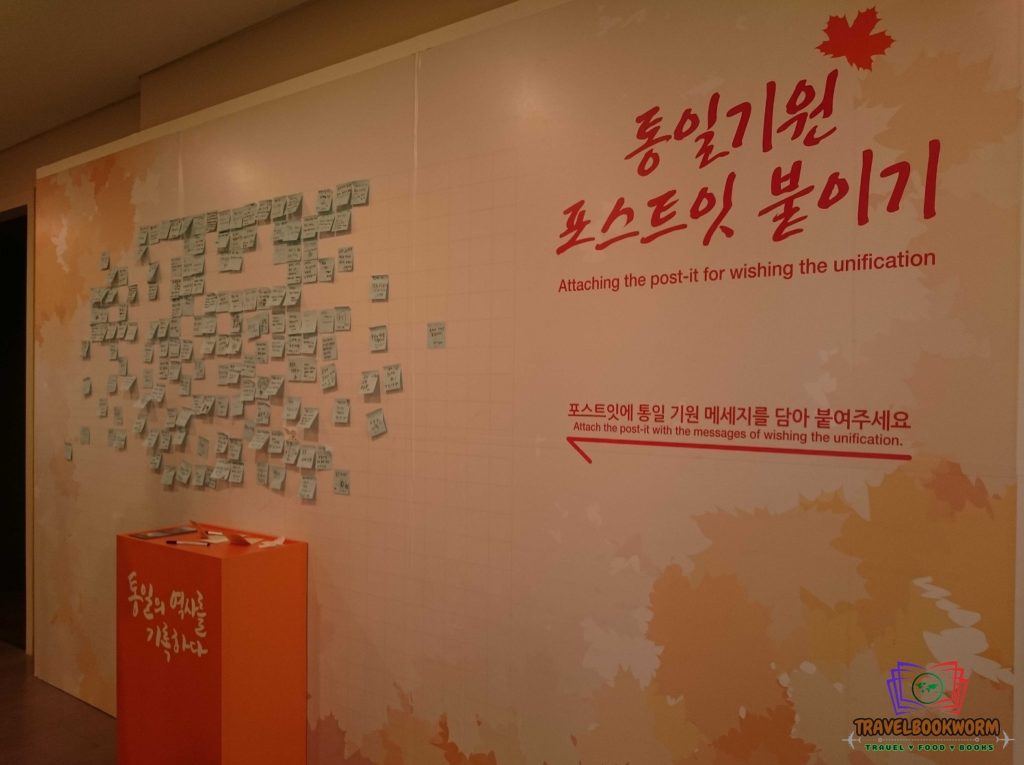
A Desire for a Unified Fatherland
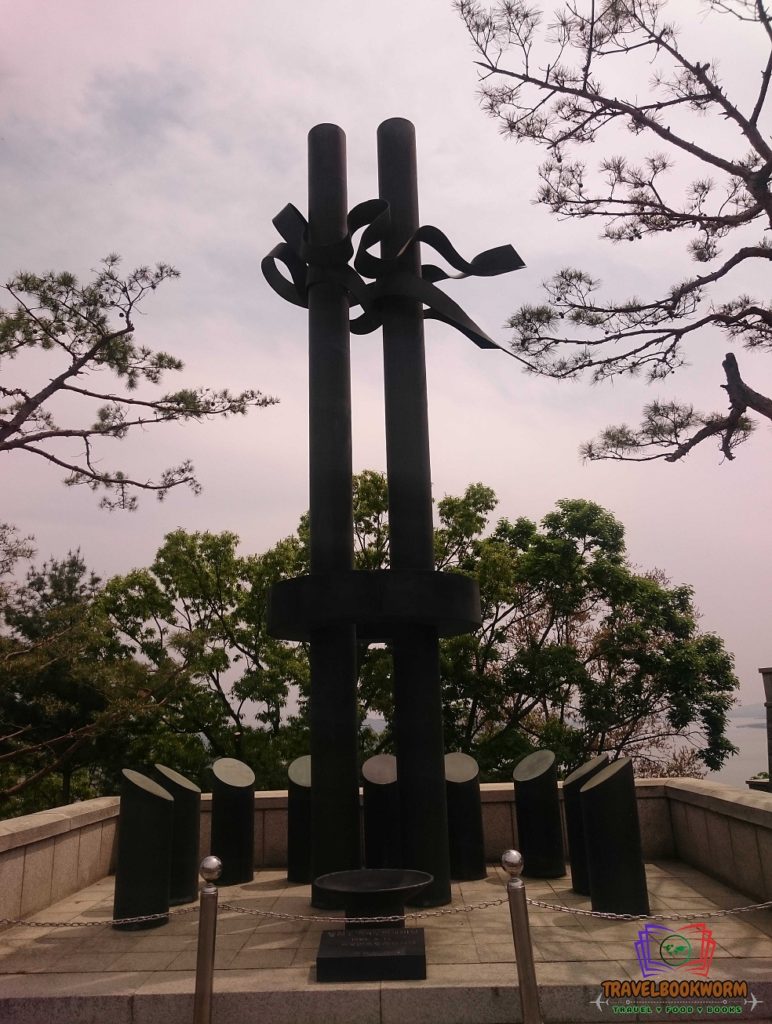
This monument, erected to express the desire of seventy million compatriots for the unification of their fatherland, symbolises the national reconciliation and eternal prosperity of a unified nation.
The two large pillars represent the South and the North, with the circle around them implying unification that binds the South and the North into one and eternal prosperity of the nation.
The figures on the top of the pillars depict the dove of peace and nine small pillars below represent the nine provinces of a unified Korea.
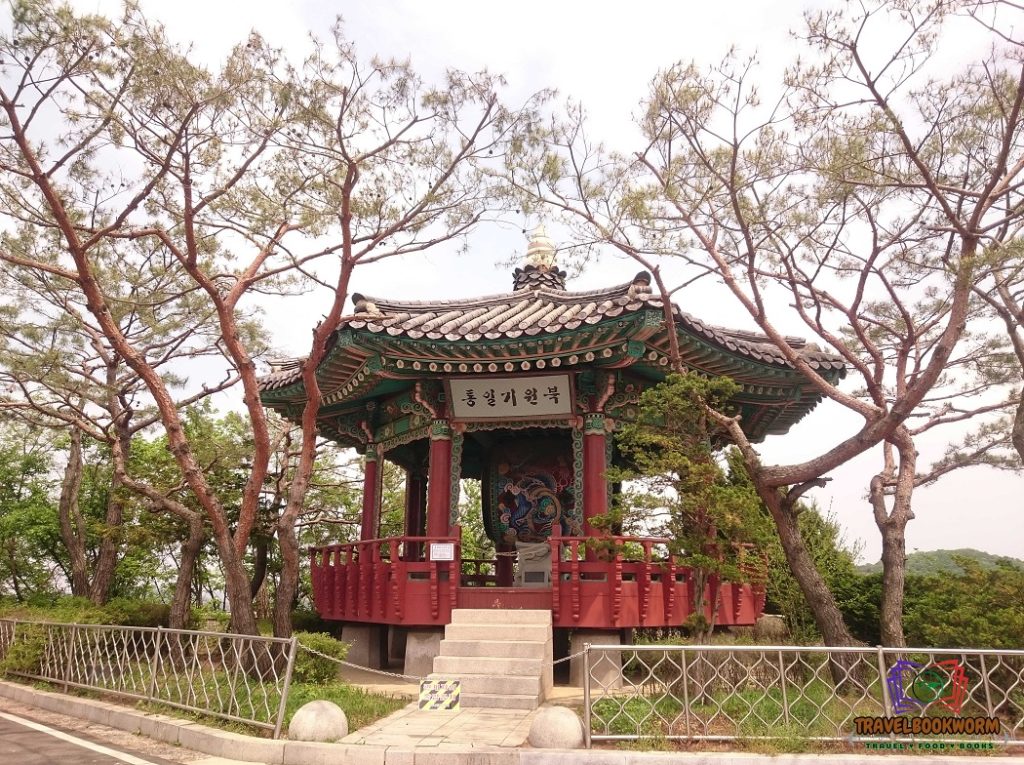
Additional information:
Sanseong Mountain Fortress
This mountain fortress dates to the Baekje Kingdom (18 B.C. ~ 660). The walls originally ran 1.2km around the peak of Mt. Odusan. Which overlooks the confluence of the Hangang and Imjingang rivers. Part of the ancient fortress wall still stands to the west, where the rivers join.
A tier was cut into the rocky slope to make way for the wall. The wall itself was built of cut stones, and its inner cavity was filled with rubble and broken stones. The top of the wall was finished with clay that was pounded hard to prevent rainwater from permeating into the wall.
History of the three kingdoms, compiled in 1145, states that King Gwanggaeto occupied Gwanmiseong Fortress, a strategic point of Baekje, in 392. It is believed that Gwanmiseoing Fortress was Odu Sanseong. The detailed map of Korea drafted by Kim Jeong-ho (? ~ 1866) also shows this area as Gwanmiseong.
Travel Date: 04th May 2017 & 03rd October 2017
